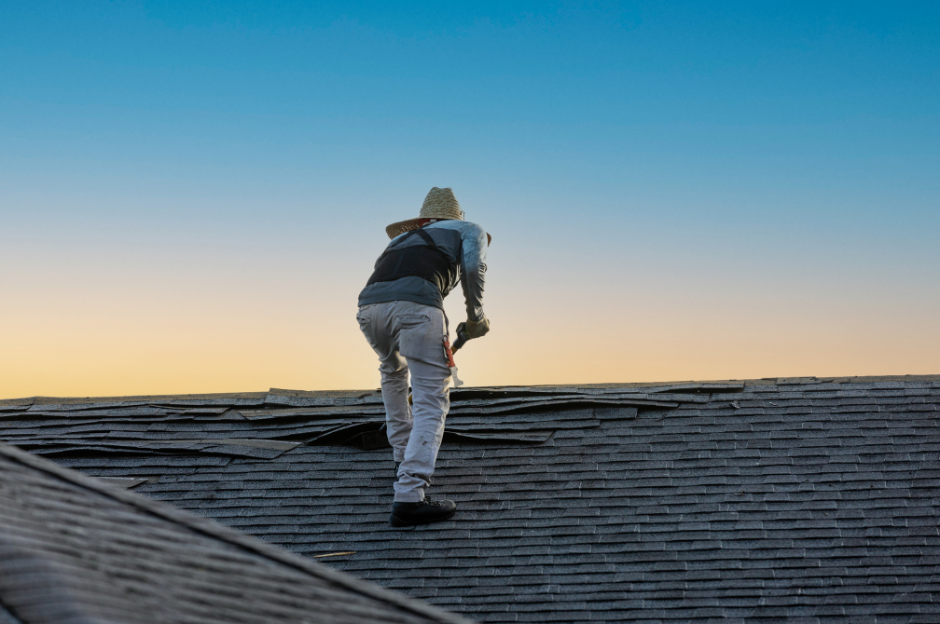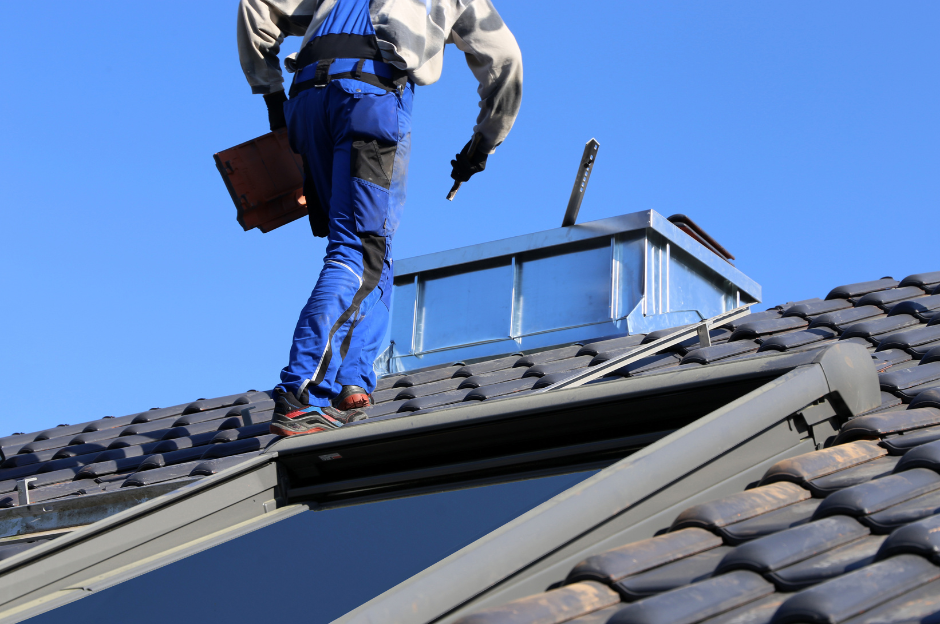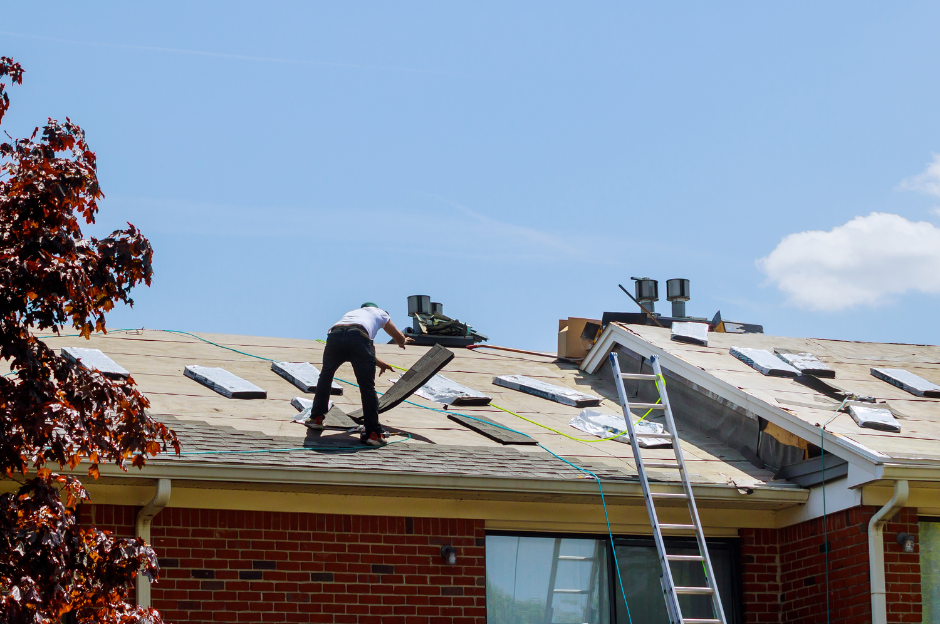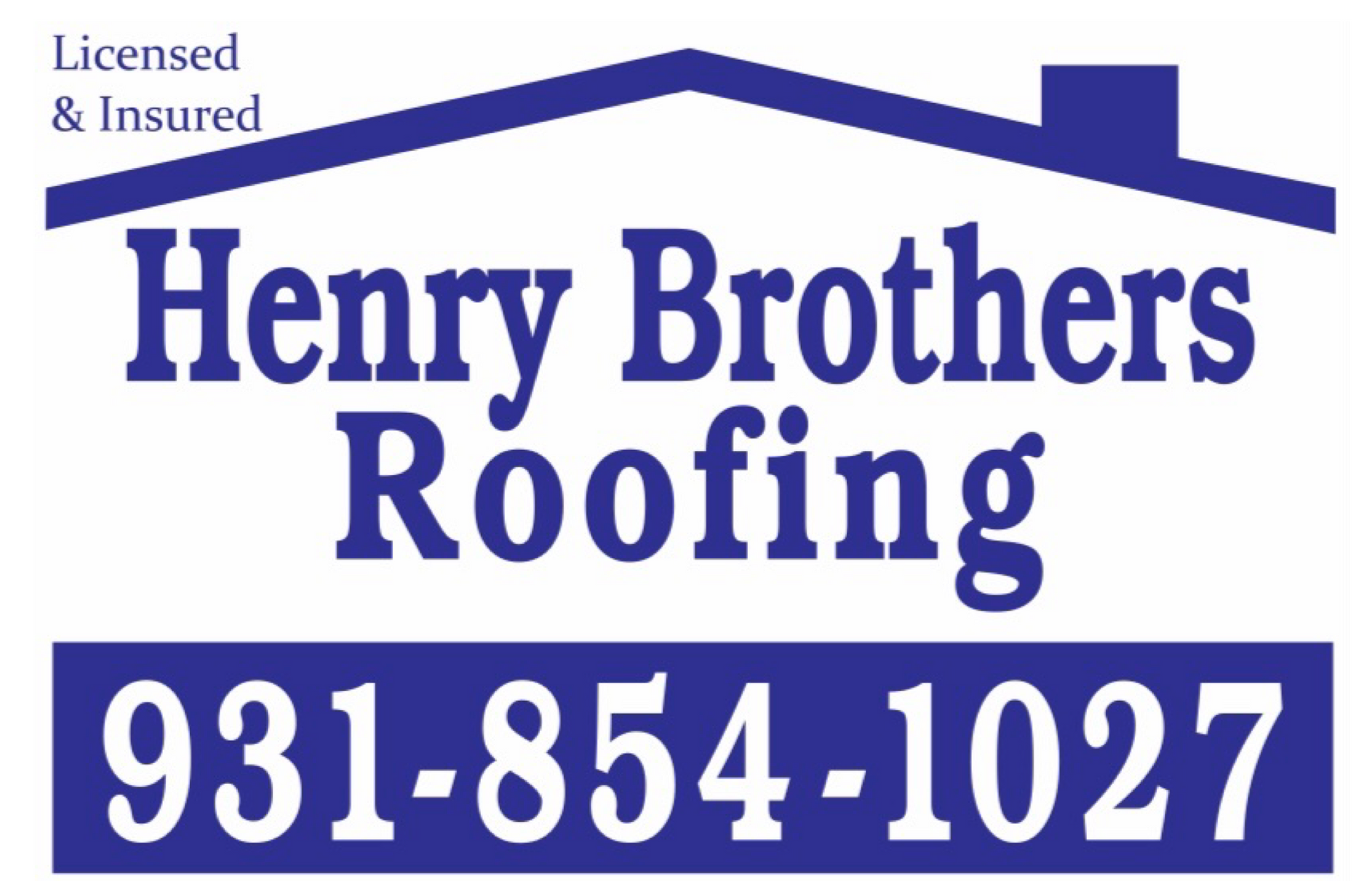Composite Roofing Solutions: Blending Style and Substance
May 24, 2024

A roof is not just a protective covering for a building; it's a defining feature that contributes to the overall aesthetics, durability, and energy efficiency of a structure. As technology and innovation continue to evolve in the construction industry, composite roofing solutions have emerged as a versatile and sustainable option for homeowners and builders alike. In this blog post, we'll explore the world of composite roofing, its benefits, design options, environmental impact, and why it's becoming increasingly popular in the construction industry.
Understanding Composite Roofing
Composite roofing, also known as synthetic roofing, is a roofing material made from a combination of various materials to create a durable, weather-resistant, and visually appealing roof. Unlike traditional roofing materials such as asphalt, wood, or clay, composite roofing blends multiple components to achieve superior performance and aesthetic versatility.
Benefits of Composite Roofing Solutions
Composite roofing offers several advantages over traditional roofing materials:
1. Durability
Composite roofing materials are engineered to withstand harsh weather conditions, including high winds, heavy rain, hail, and UV exposure. They are highly resistant to rot, mold, and insect damage, ensuring long-term durability and structural integrity.
2. Low Maintenance
Composite roofing requires minimal maintenance compared to other roofing materials. It does not need to be treated, sealed, or painted regularly, reducing the time and cost associated with upkeep.
3. Energy Efficiency
Many composite roofing materials are designed to reflect sunlight and heat, reducing the heat absorbed by the building and lowering cooling costs. Some products are ENERGY STAR® certified, indicating superior energy efficiency and potential savings on utility bills.
4. Versatility
Composite roofing comes in a wide range of styles, colors, and textures, allowing homeowners to achieve the desired look for their home. Whether you prefer the appearance of slate, wood shake, or tile, there's a composite roofing option to suit your taste and architectural style.
5. Environmentally Friendly
Composite roofing is often made from recycled materials, such as plastic, rubber, and wood fibers, making it a sustainable choice for environmentally conscious homeowners. Additionally, composite roofing materials are fully recyclable at the end of their lifespan, further reducing their environmental impact.
Design Options for Composite Roofing
Composite roofing offers endless design possibilities, allowing homeowners to customize their roof to complement their home's architecture and aesthetic preferences. Some popular design options include:
1. Slate Look
Composite roofing products that mimic the appearance of natural slate offer the timeless elegance of slate without the weight and maintenance requirements. Slate-look composite roofing comes in a variety of colors and textures, providing a sophisticated look for any home.
2. Wood Shake Aesthetic
Composite roofing materials designed to replicate the look of wood shake offer the rustic charm of cedar shakes with enhanced durability and fire resistance. These products come in various profiles and colors, allowing homeowners to achieve the desired rustic aesthetic without the drawbacks of natural wood.
3. Tile Style
Composite roofing tiles are available in a range of profiles, including Spanish tile, Mediterranean tile, and mission tile. These tiles capture the beauty and richness of traditional clay tiles while offering superior durability and weather resistance.
4. Custom Colors and Finishes
Many composite roofing manufacturers offer custom color matching and finish options to ensure that the roof complements the home's exterior color scheme and architectural style. Homeowners can choose from a palette of colors and finishes to achieve the desired aesthetic impact.
Environmental Impact of Composite Roofing
Composite roofing is recognized for its environmental benefits and sustainability. By using recycled materials and reducing the need for frequent replacements and maintenance, composite roofing helps conserve natural resources, reduce landfill waste, and lower energy consumption. Additionally, many composite roofing products are ENERGY STAR® certified, indicating superior energy efficiency and reduced greenhouse gas emissions.
Why Composite Roofing is Gaining Popularity
Composite roofing is gaining popularity among homeowners and builders for several reasons:
1. Aesthetic Appeal
Composite roofing offers a wide range of design options, allowing homeowners to achieve the desired look for their home without sacrificing durability or performance. Whether you prefer the look of slate, wood shake, or tile, there's a composite roofing solution to suit your style.
2. Durability and Longevity
Composite roofing materials are engineered to withstand the elements and maintain their appearance and performance for decades. With proper installation and maintenance, composite roofs can last 50 years or more, providing long-term value and peace of mind for homeowners.
3. Sustainability
Composite roofing is made from recycled materials and is fully recyclable at the end of its lifespan, making it a sustainable choice for environmentally conscious homeowners. By choosing composite roofing, homeowners can reduce their environmental footprint and contribute to a more sustainable future.
4. Low Maintenance
Composite roofing requires minimal maintenance compared to traditional roofing materials such as asphalt, wood, or clay. With periodic inspections and routine cleaning, composite roofs can maintain their appearance and performance for years with minimal effort.
5. Energy Efficiency
Many composite roofing products are designed to reflect sunlight and heat, reducing the heat absorbed by the building and lowering cooling costs. By improving energy efficiency, composite roofing can help homeowners save money on utility bills while reducing their carbon footprint.
Conclusion
Composite roofing solutions offer a winning combination of style and substance, providing homeowners with durable, low-maintenance, and visually appealing roofing options. With a wide range of design options, environmental benefits, and long-term durability, composite roofing is becoming increasingly popular in the construction industry. Whether you're building a new home or replacing an existing roof, composite roofing offers a versatile and sustainable solution that blends seamlessly with any architectural style. By choosing composite roofing, homeowners can enjoy the beauty, performance, and peace of mind that comes with a quality roofing solution that stands the test of time.
Henry Brothers Blog

Multi-family buildings pose unique challenges for roofing—requiring durable, efficient, and cost-effective solutions that serve multiple households simultaneously. Selecting the right system and partner can significantly impact long-term maintenance and energy bills. Common Roofing Challenges in Multi-Family Properties Large surface areas Multiple penetrations (vents, HVAC units) Noise and disruption during installation High foot traffic for maintenance Energy efficiency Efficient Roofing Materials TPO (Thermoplastic Polyolefin): Lightweight, reflective, and energy-efficient. Ideal for flat or low-slope roofs. Modified Bitumen: Offers durability and weather resistance. Works well for larger structures. Metal Roofing: Long-lasting and low-maintenance. Higher upfront costs but excellent ROI. Asphalt Shingles: Budget-friendly and easy to repair. Better for pitched multi-family homes. Affordability Strategies Bulk Purchasing Discounts: Roofers often offer lower rates for large-scale projects. Energy Rebates and Tax Credits: Cool roofing materials may qualify for incentives. Roof Coatings: Extend lifespan and defer full replacements. Preventive Maintenance Plans: Regular inspections reduce major repair costs. Partnering with the Right Contractor Choose a roofing contractor experienced in multi-family dwellings. Look for: References from similar projects Warranty offerings Insurance and licensing Clear timelines and communication protocols

Your roof is one of the most defining features of your home’s architecture. A well-designed roof complements the style, era, and character of your house, enhancing both curb appeal and value. Whether you own a modern home, a Victorian masterpiece, or a Mediterranean villa, choosing the right roofing materials and design is essential. This article explores custom roofing solutions for different architectural styles, ensuring your roof is both aesthetic and functional. 1. Why Custom Roofing Matters A one-size-fits-all approach doesn’t work for roofing. Here's why customization is key: 🏡 Preserves Architectural Integrity The roof should match the home's era and design. A poorly chosen roof can clash with the architecture and reduce property value. 💰 Boosts Home Value & Curb Appeal A well-matched roof enhances visual appeal, making your home stand out. Homebuyers prefer houses with roofs that fit the overall design. 🌦 Enhances Durability & Efficiency Custom roofing accounts for climate, slope, and insulation. Choosing the right materials ensures longer roof life and energy efficiency. 2. Best Roofing Materials for Different Architectural Styles 🏗 Modern & Contemporary Homes Modern architecture focuses on clean lines, minimalism, and energy efficiency. Best Roofing Options: ✅ Flat Roofs – Achieve a sleek, contemporary look. ✅ Metal Roofing – Durable and complements modern aesthetics. ✅ Green Roofs – Eco-friendly and visually striking. ✅ Solar Panels – Integrate renewable energy solutions. 🏰 Victorian & Gothic Revival Homes These homes have steep-pitched roofs, turrets, and elaborate detailing. Best Roofing Options: ✅ Slate Tiles – Classic, long-lasting, and historically accurate. ✅ Wood Shingles – Adds charm and natural beauty. ✅ Decorative Metal Accents – Enhances ornate Victorian designs. 🏝 Mediterranean & Spanish-Style Homes Inspired by European coastal homes, these feature stucco walls and curved archways. Best Roofing Options: ✅ Clay or Terracotta Tiles – Traditional, weather-resistant, and elegant. ✅ Concrete Tiles – Durable and available in various textures and colors. ✅ Synthetic Spanish Tiles – Modern, lightweight alternatives with classic appeal. 🌲 Rustic & Cabin-Style Homes These homes emphasize natural materials and a cozy aesthetic. Best Roofing Options: ✅ Wood Shakes – Blends seamlessly with wooded surroundings. ✅ Metal Roofing (Rustic Finish) – Durable with a weathered, natural look. ✅ Green Roofs – Enhances sustainability and insulation. 🏡 Colonial & Traditional Homes These timeless homes focus on symmetry and classic proportions. Best Roofing Options: ✅ Asphalt Shingles – Affordable and available in classic shades. ✅ Slate Roofing – Elegant and historically accurate. ✅ Copper or Metal Accents – Enhances historic charm. 🏛 Mid-Century Modern Homes This style features low-sloped roofs, large windows, and open spaces. Best Roofing Options: ✅ Flat or Low-Slope Roofs – Clean, minimalistic aesthetic. ✅ Rubber or Membrane Roofing – Ideal for low-pitch roofs. ✅ Green or Living Roofs – Complements eco-conscious designs. 🏰 Tudor-Style Homes Tudor homes have steeply pitched gables and decorative half-timbering. Best Roofing Options: ✅ Wood or Synthetic Shake Shingles – Traditional and authentic. ✅ Slate Roofing – Enhances historic charm and durability. ✅ Architectural Asphalt Shingles – Mimics wood or slate at a lower cost. 3. Custom Roofing Features to Consider Beyond materials, adding customized elements can elevate your roof’s design. 🔹 Roof Color & Texture Dark roofs enhance historic and formal homes. Light-colored roofs reflect heat, ideal for warm climates. Textured materials (slate, shakes) add visual depth. 🏠 Roof Shape & Pitch Steep roofs fit Gothic and Victorian styles. Flat or low-sloped roofs match modern homes. Custom pitches enhance energy efficiency and durability. 🔆 Skylights & Roof Windows Adds natural light and enhances ventilation. Works well in modern, contemporary, and rustic homes. 🌞 Solar Roofing & Smart Technology Solar shingles blend seamlessly into modern & eco-friendly homes. Smart roofing systems adjust ventilation & insulation automatically. 4. Custom Roofing: How to Get Started 1️⃣ Consult a Roofing Expert Work with an architect or contractor specializing in custom roofs. Ensure they understand historical accuracy and climate considerations. 2️⃣ Choose High-Quality Materials Invest in durability, energy efficiency, and aesthetics. Select roofing that aligns with your home’s style and longevity needs. 3️⃣ Consider Long-Term Costs & ROI Some materials have higher upfront costs but last longer and increase home value. Energy-efficient options can reduce heating and cooling expenses. 4️⃣ Verify Local Building Codes Some roofing styles require special permits. Ensure compliance with HOA guidelines and historical district regulations.


